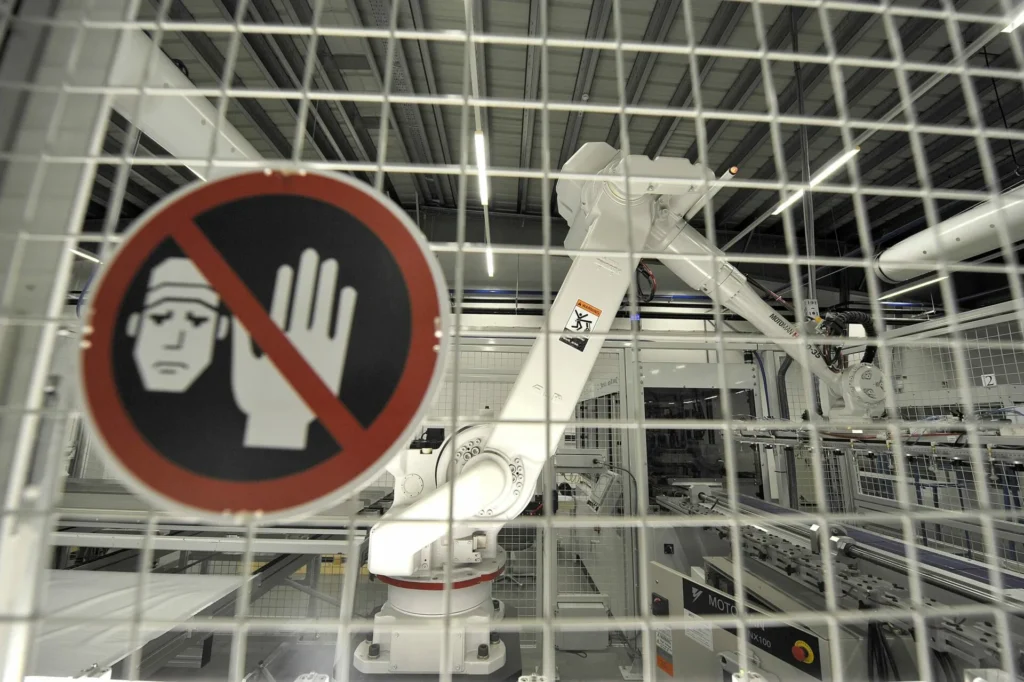Slovenia’s competitiveness ranking is the lowest it has been in five years. At the same time, business leaders gathered in the Economic Circle warn that “without a step forward, Slovenia will fall even further back next year”. The business representatives responded a day after Robert Golob misled the National Assembly by saying how well Slovenia was doing under his rule.
The European Commission had already downgraded Slovenia’s economic growth forecast for this year from 2.5 percent to 2.0 percent in May, and the Bank of Slovenia lowered it from 2.2 percent to 1.3 percent a few days ago. In last week’s competitiveness ranking published by the Swiss IMD Institute, Slovenia maintained last year’s ranking of 46th. However, this is Slovenia’s lowest ranking in the last five years.
Warnings from business leaders
The Business Circle (Gospodarski krog), which brings together 17 business organisations, therefore stressed the need for action to boost innovation, accelerate digital and green transformation, decarbonise labour, remove bureaucratic red tape and improve the management of public services. Boosting the capital market, attracting foreign investment, and a stable regulatory environment are also key. A long-term strategy is needed to raise competitiveness, upgrade the pension system and better manage domestic capital. Strengthening economic resilience, including food and energy sovereignty, is also a priority. Business representatives also stressed the need to develop a new long-term strategy to increase international competitiveness and to involve businesses more in policy-making.
Low productivity, high tax burden on labour, energy insecurity, rigid labour legislation, administrative complexity and labour shortages continue to be highlighted as key problems or challenges.
The years we have lost will not be replaced
Last week, on behalf of the Economic Circle, the state of the economy was presented by representatives of the Slovenian Chamber of Commerce and Industry (GZS), the Chamber of Craft and Small Business of Slovenia (OZS), the Slovenian Chamber of Commerce (TZS) and the Slovenian-German Chamber of Commerce and Industry. The Chamber of Commerce and Industry pointed out that they have been “constantly warning and making proposals on how to improve the business environment in the most important segments of companies’ operations, where the Slovenian economy is not competitive at all.” This was now once again confirmed by the results of the IMD competitiveness ranking. Tibor Šimonka, President of the Chamber of Commerce and Industry, stressed: “If for the second year in a row we do not achieve Slovenia’s expected economic growth of between 2 and 2.5 percent, this will mean two lost years that we will not be able to replace.”

Proposals for action, the government is deaf
The Chamber of Commerce and Industry proposes five sets of measures to boost competitiveness. In the area of taxes and contributions, we need to relieve the burden on labour, reducing the tax wedge for both businesses and employees in the long term. Following the example of other European countries, they called on the government to develop measures to mitigate energy prices, at least for energy-intensive companies in the materials industry. In the area of investment in the economy, investment in the business sector should be stepped up. The digital transition needs to be accelerated, innovation efficiency needs to be improved, and the quality of public services needs to be improved by introducing modern methods of people management and reward. They called on the government to cut disproportionate red tape and to speed up the lengthy procedures for zoning, permits, etc., through concrete measures. On the labour market, they propose measures to increase the motivation of the unemployed to return to the labour market, to encourage the prolonged activity of older people who are able and willing to work more, and to speed up recruitment procedures for foreigners where there is a shortage of domestic workers.
Decline in manufacturing and industrial production
Bojan Ivanc, Chief Economist of the Chamber of Commerce and Industry, pointed out that neighbouring Austria retained its 26th place, while Hungary moved up six places. Germany, as our most important foreign trade partner, improved its position by five places – it ranks 19th. He added that “data on the dynamics of industrial production in Slovenia show that it has been rather weak since the start of the energy crisis in 2022, while at the same time lagging behind the EU-27 average. In April this year, Slovenia’s industrial production was down by 1.6 percent from the average level in 2021, while it was up by 3.3 percent for the EU-27 average”. “In contrast to the EU-27, where industrial production increased slightly on average in the last quarter, it fell further in Slovenia,” Ivanc said.

Industrial production stagnates
Industrial production has stagnated over the past 12 months. It has fallen more sharply in 9 industry groups, mainly those linked to the complex machinery and automotive industries, construction and industries with a high labour cost content in value added. Only electrical machinery, clothing, metals and chemical products recovered, with the recovery in the latter two also linked to the sharp contraction in production at the height of the energy crisis. Ivanc added that “the sentiment indicator for manufacturing did not strengthen in May either, and was lower than the EU-27 average, which does not point to an improvement in the second quarter of this year.” He added that the fall in gross domestic product in the first quarter mainly reflected a decline in manufacturing, where real value added contracted by 2.5 percent over the period. “If another bad quarter were to repeat itself, this could already lead to a rise in borrowing costs and a rebalancing of the budget, as the corresponding tax inflows from the slowing economic dynamics would be lower than currently projected,” concluded the Chamber of Commerce and Industry’s Chief Economist.
High sickness absence also cripples the economy
The Chamber of Craft and Small Business of Slovenia further warns that absence due to sickness is also crippling the economy. The volume of sick leave is increasing year by year and is causing huge problems for the economy. The economy loses more than 18 million working days a year as a result.
According to statistics, Slovenia ranks among the top EU countries in terms of sickness absence. More than 56,000 employees miss work every day due to sickness, the average number of sick days is 21.6 per employee per year, and the cost of sick pay has increased several-fold over the last decade. This increase has been particularly acute for craftspeople and entrepreneurs in recent years. The results could have been much better if the government had been more responsive to the chambers’ proposals and comments.
Vida Kocjan


